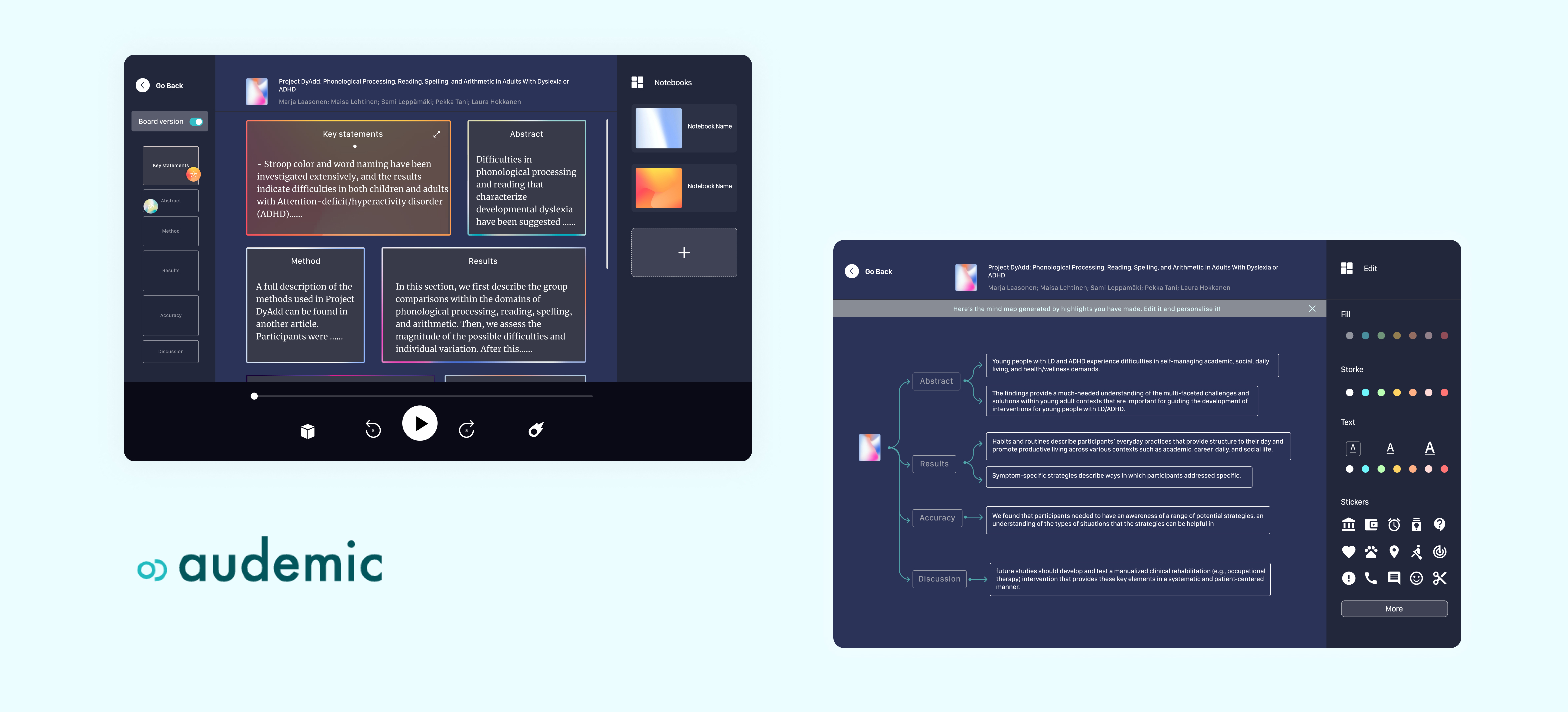
Redesign Audemic
Audemic is an app that allows researchers and students to listen to academic papers, with a focus on increasing comprehension for a diverse range of users with learning differences and neuro diversities.
By evaluating current interfaces of Audemic and researching the needs of ADHD students, the novel design has added customised functions and gamified elements which cater to the behaviour pattern of people with ADHD.
Scope
Problem framing
Concept development
My Role
User research
User experience
Ideation
UI design
Duration
09/2022 - 12/2022
Client
AudemicWhat's the context?
ADHD is a growing global psychiatric disorder with life-long symptoms. There is a total estimate of 2.6million people in the UK with ADHD.
Adults have the incidence rate of 3-4% to be diagnosed with ADHD.
People with ADHD utilise strategies to improve academic performance.
Audemic aims to make research more accessible through audio.
The Challenge
Redesign the user experience flow and user interface to increase the user engagement on Audemic.
The Goal
Help Audemic maintain more users.
Meet the needs and attract users with ADHD.
What problems does current Audemic have?
I used Audemic for one month and analysed the space for improvement of current UI.
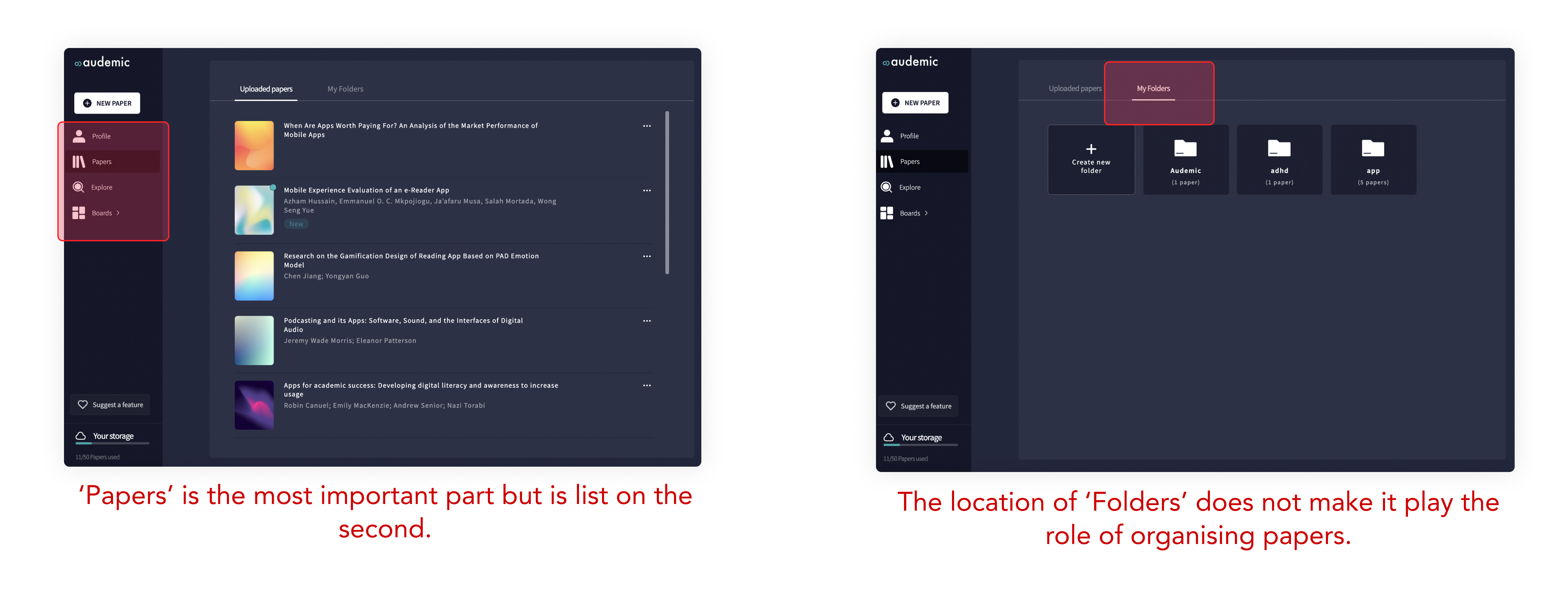
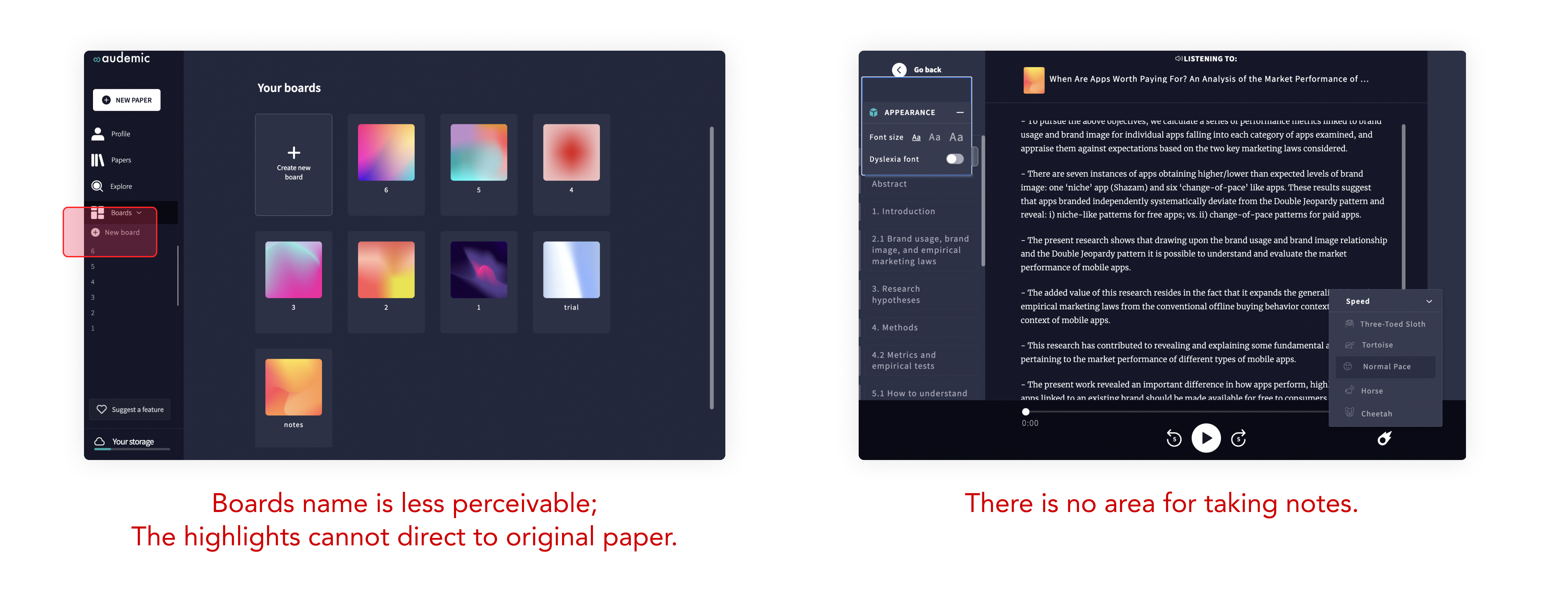
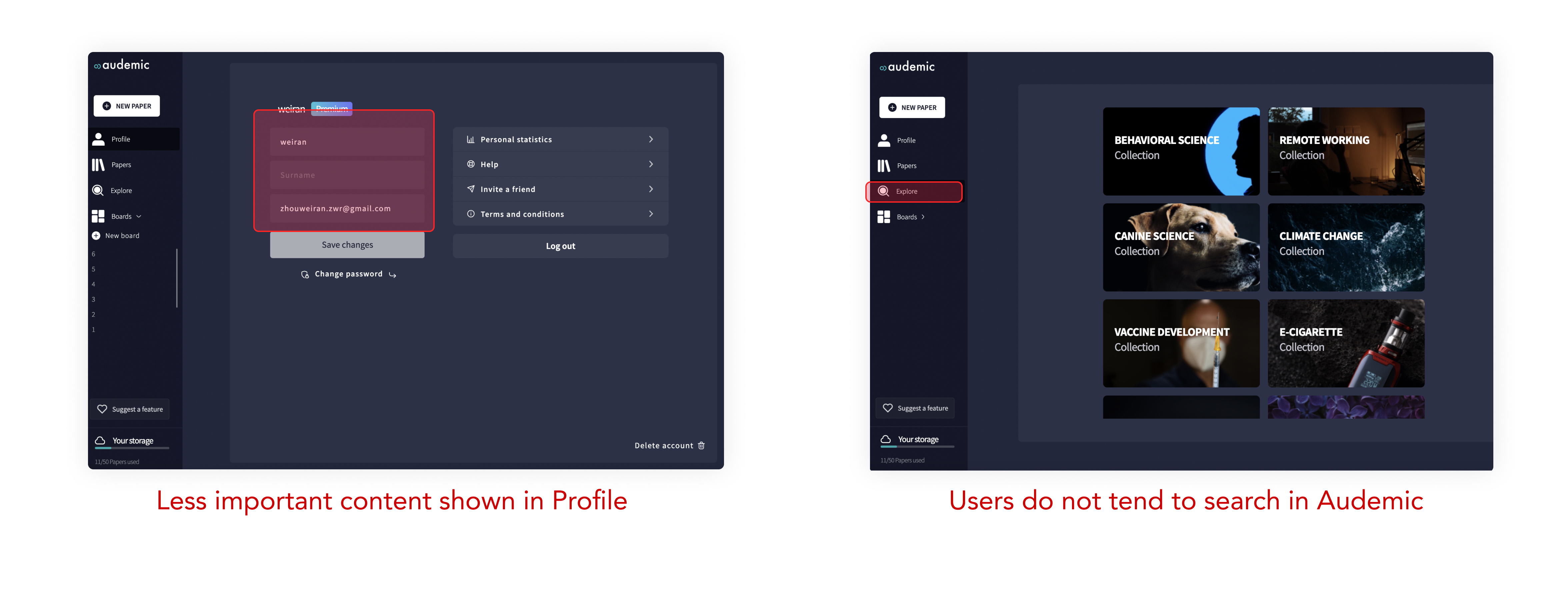
Scroll in horizon to view all pictures.
What are the expectations from users?
I checked and official website and “Request a feature” webpage of Audemic and found the needs from users.
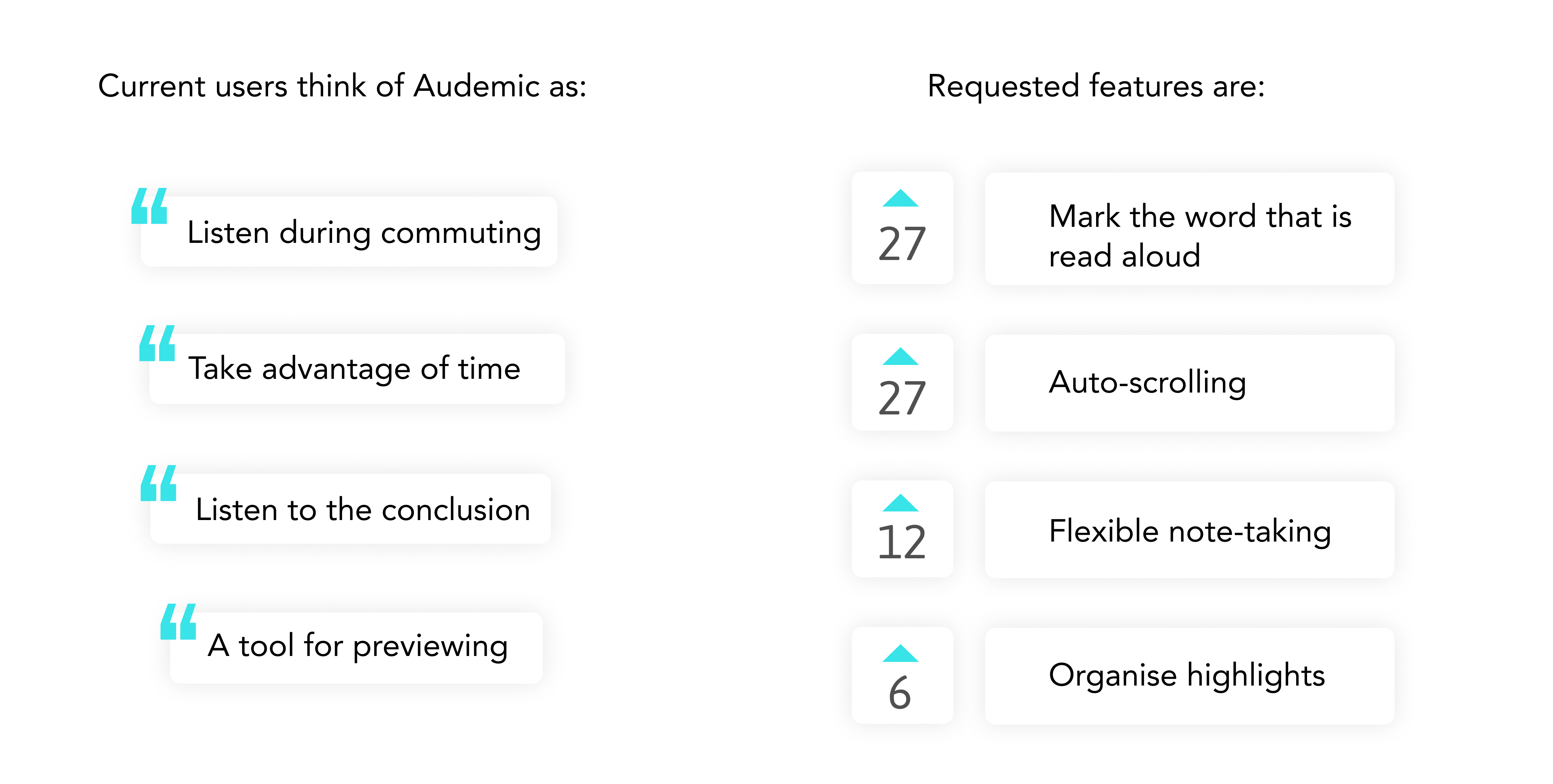
User Research
I interviewed three students who have research needs about their opinions on audible research paper and concluded the interview into the persona that features general users that Audemic wants to maintain.
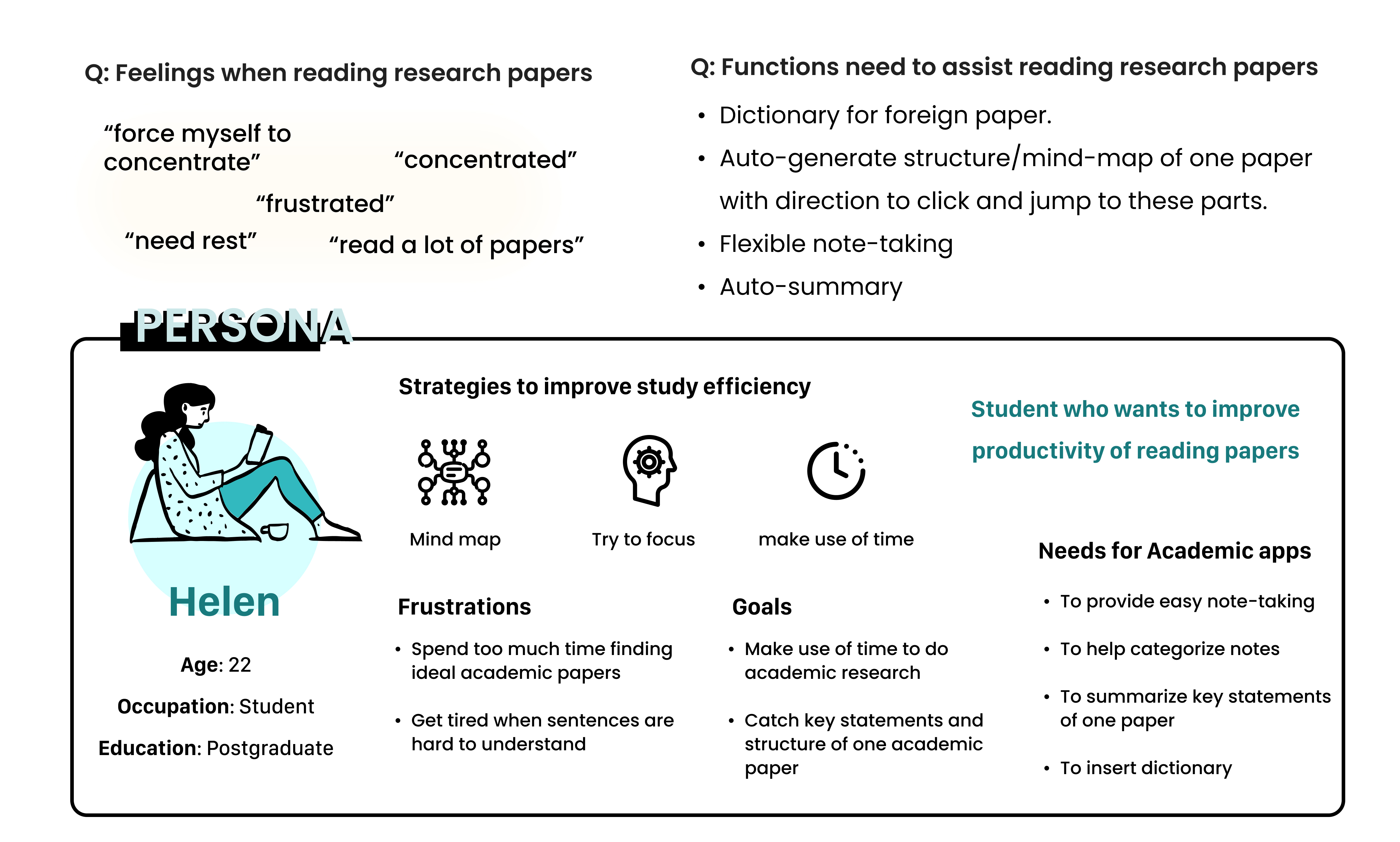
I conducted online desk research on the symptoms of ADHD, and their strategies to improve productivity in learning and created the persona of ADHD users that Audemic has opportunities to expand on.
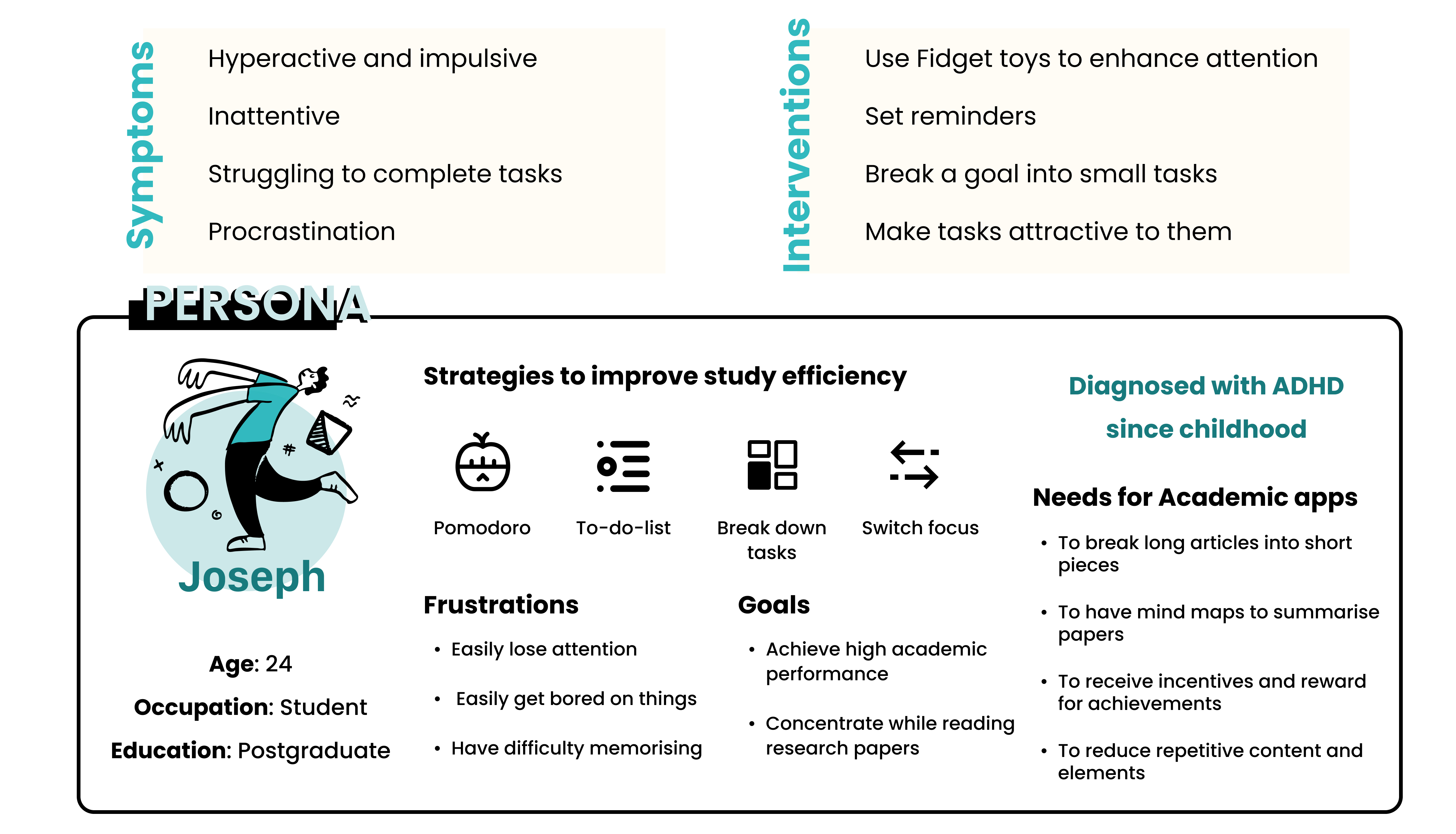
Product Strategy
Based on the analysis above, I concluded a product strategy for improving Audemic and targeting ADHD user group.
User Experience
Easily create folders
Track & edit highlights
Maintain Users
Refer to friends
Study together
Share notes
Friends rating
For ADHD
Generate mind-map
Break down tasks
Create motivation
Listening
Auto scrolling
Manually correct pronunciation
Motivation
Reward for finishing tasks
Personalise notes
Less repetitive features
Productivity
Summarise key statements
Edit highlights
Dictionary
Information Architecture Comparison
I created the information architecture before designing new interfaces. Improvements were made in the priority of sidebar, new note-taking funtions for ADHD users, competition & reward incentive in friend circle.
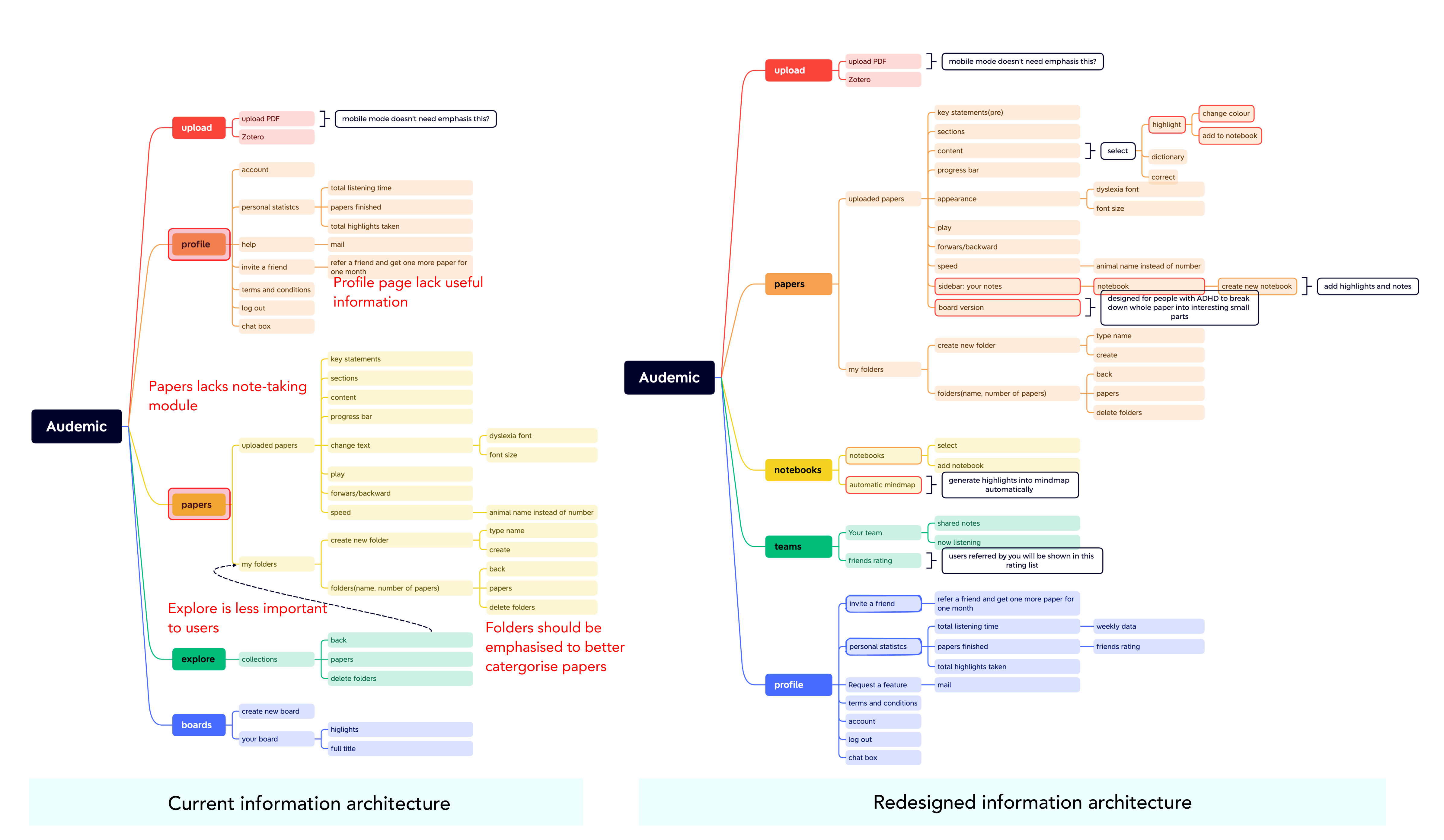
Design Outcome
Basic user experience
I changed the order in sidebar to demonstrate importance by order of appearance. In profile page, I change the layout of buttons to made useful information distinguishable to users. I added a refer and reward section to attract more users, and move the help icon to the top.
In Papers, I moved Folders visible beside inserted papers and added bulk edit function to make organising papers easier. And a highlight and no-taking user flow was designed to enable flexible highlights along listening/reading.
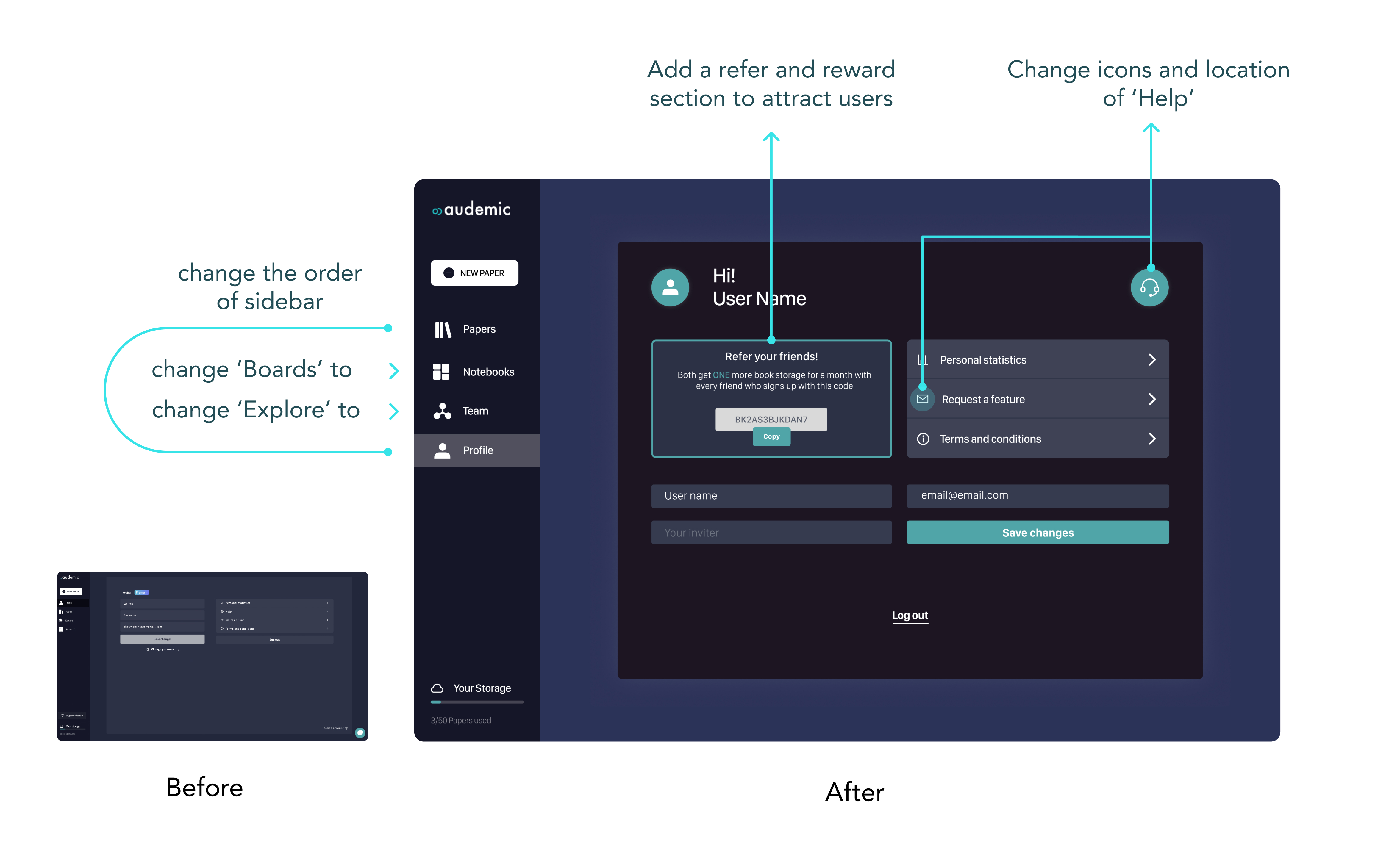
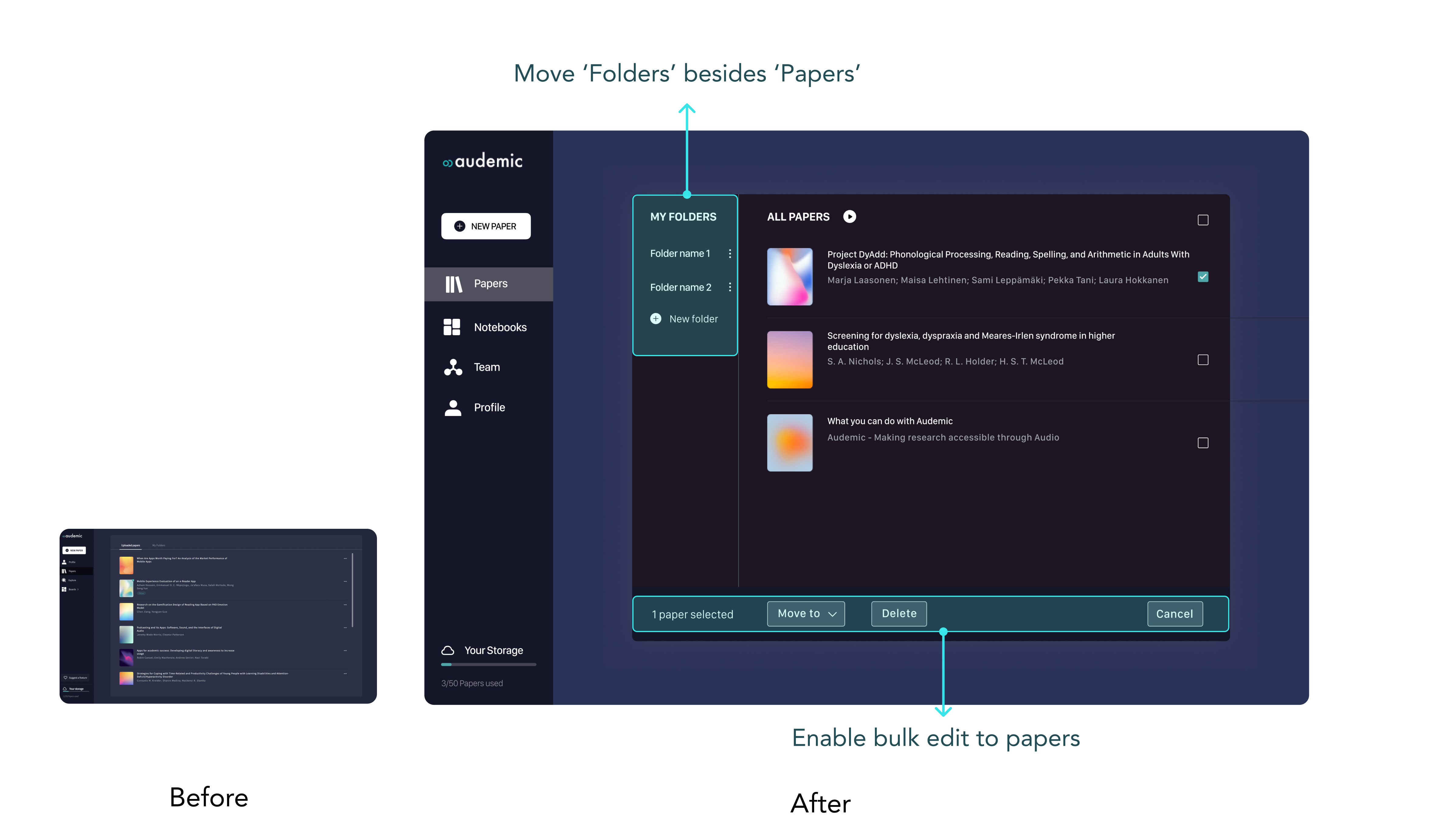
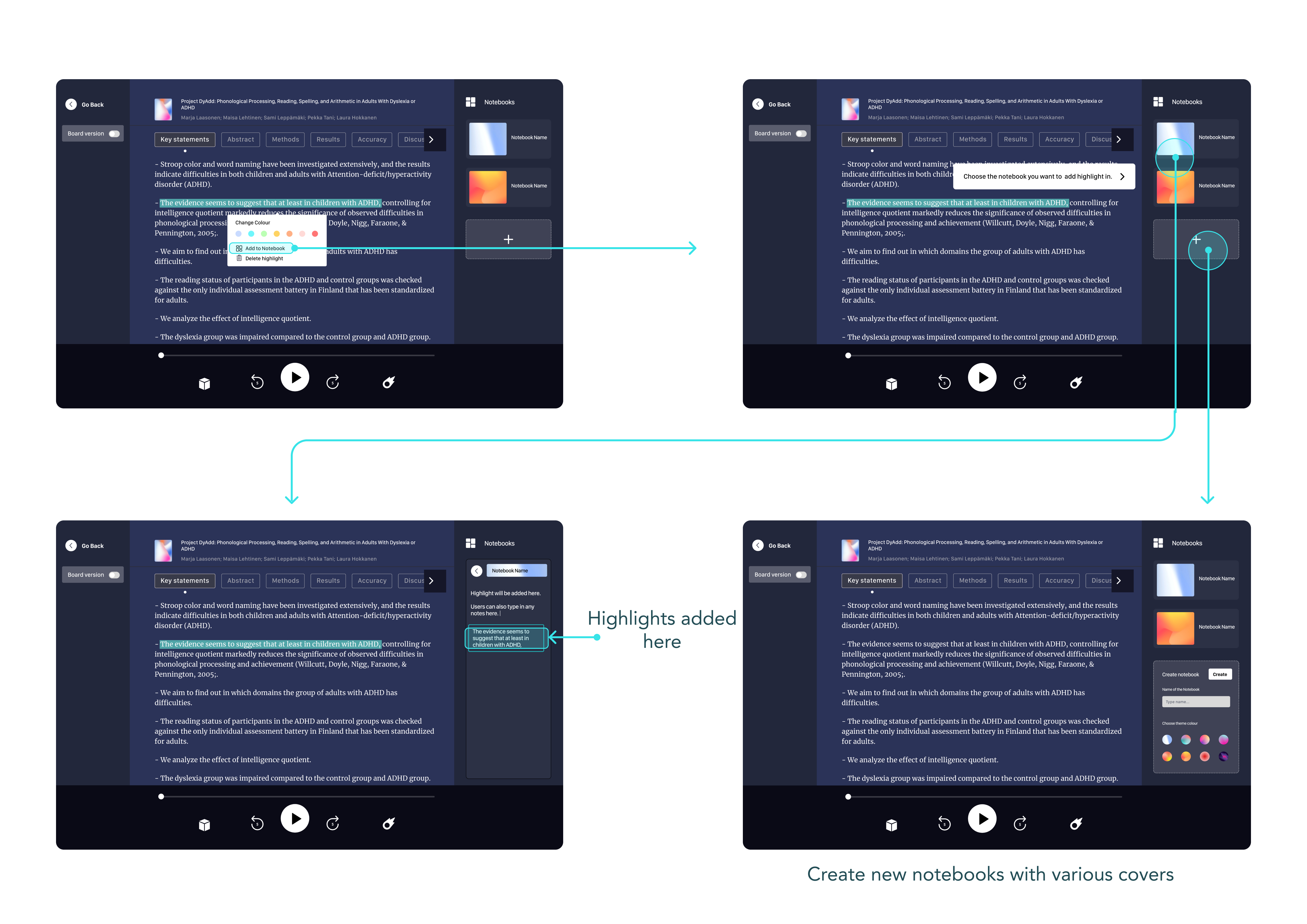
Functions for ADHD Users
Borad Version was introduced to divide papers visually into small tasks and the colourful interfaces maintain interest of ADHD users. Mindmap is proven a useful tool for people with ADHD to improve productivity in learning. Therefore, I designed the Mindmap function that automatically organises the highlights users made.
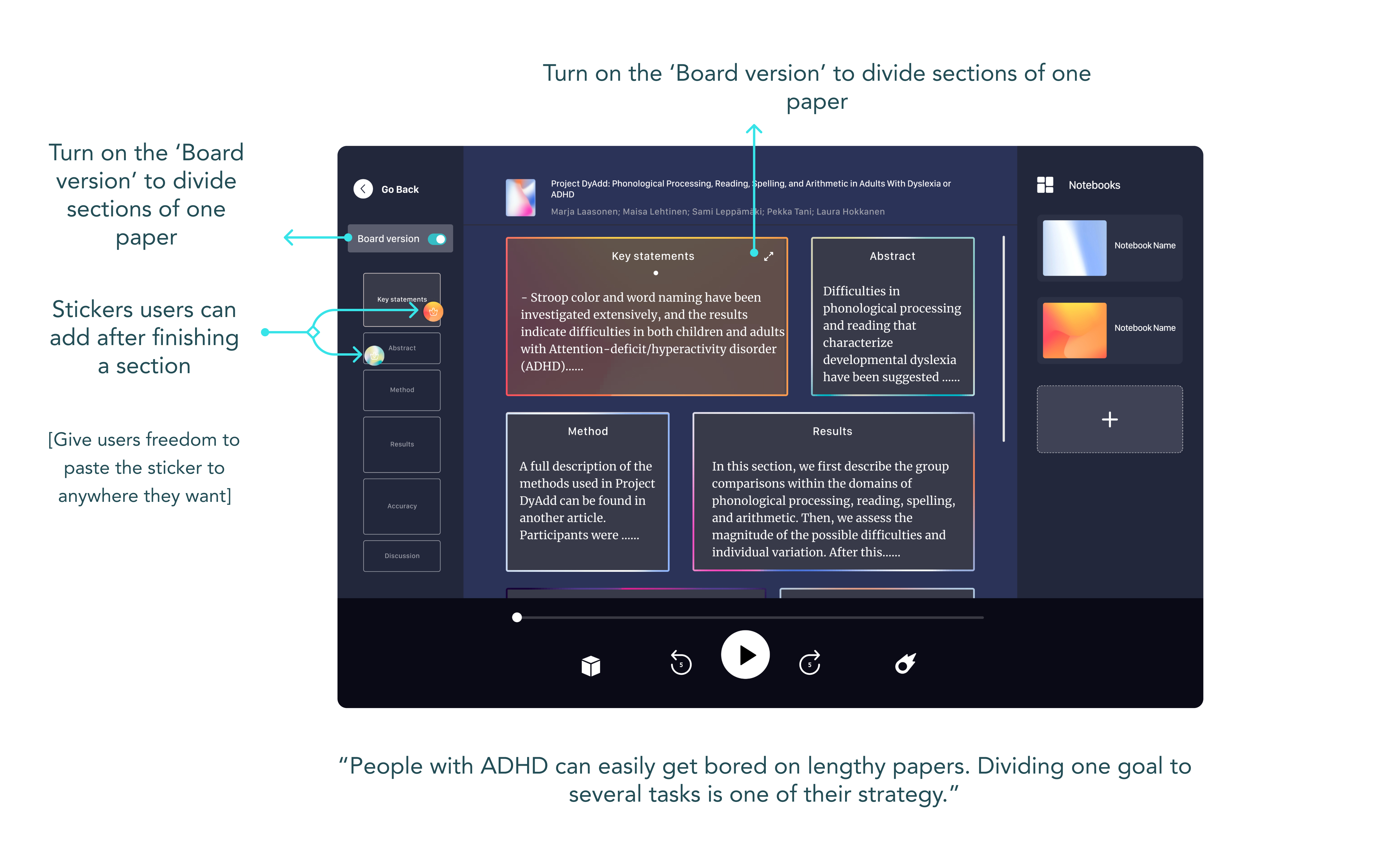
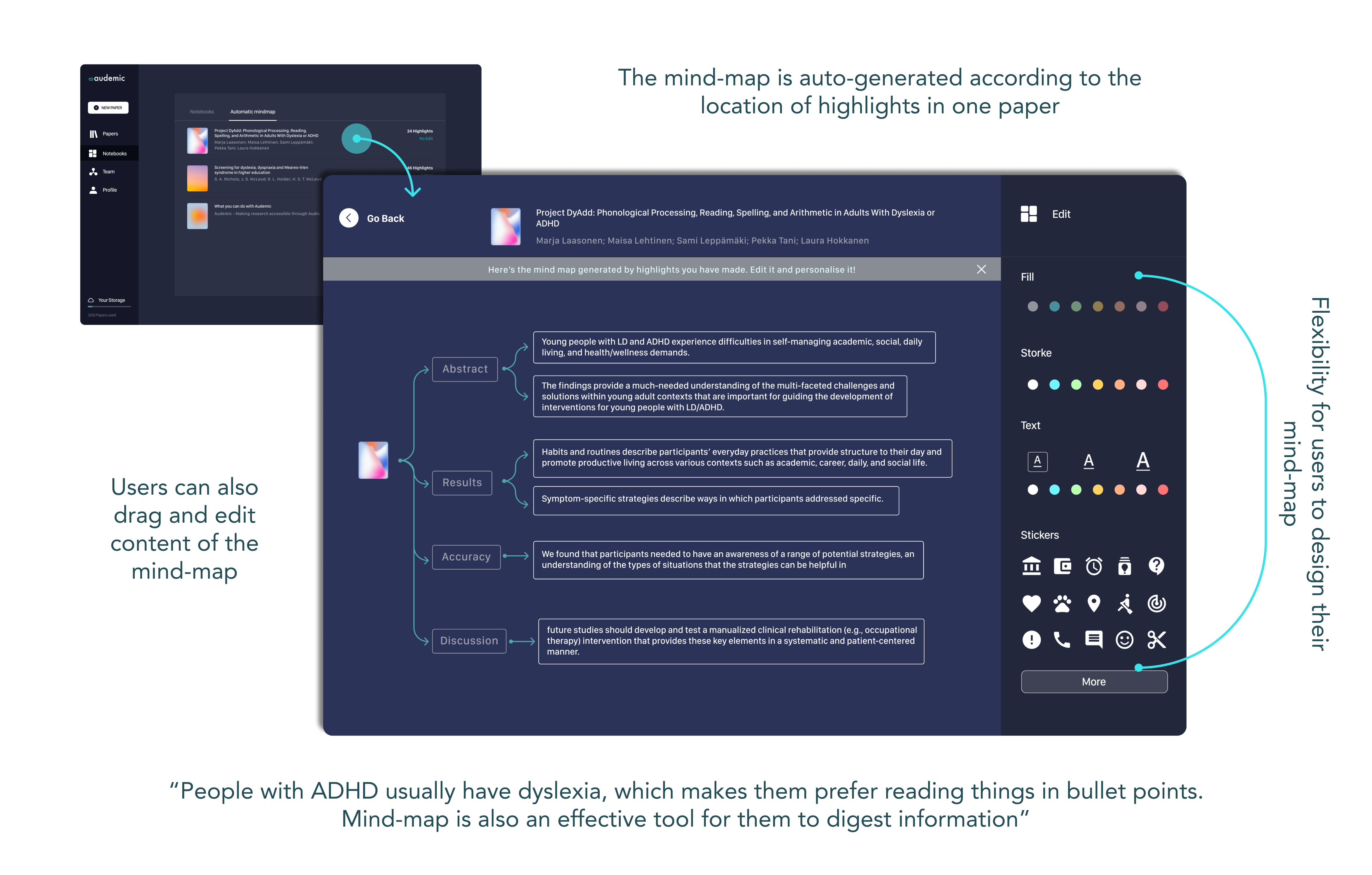
Collaboration
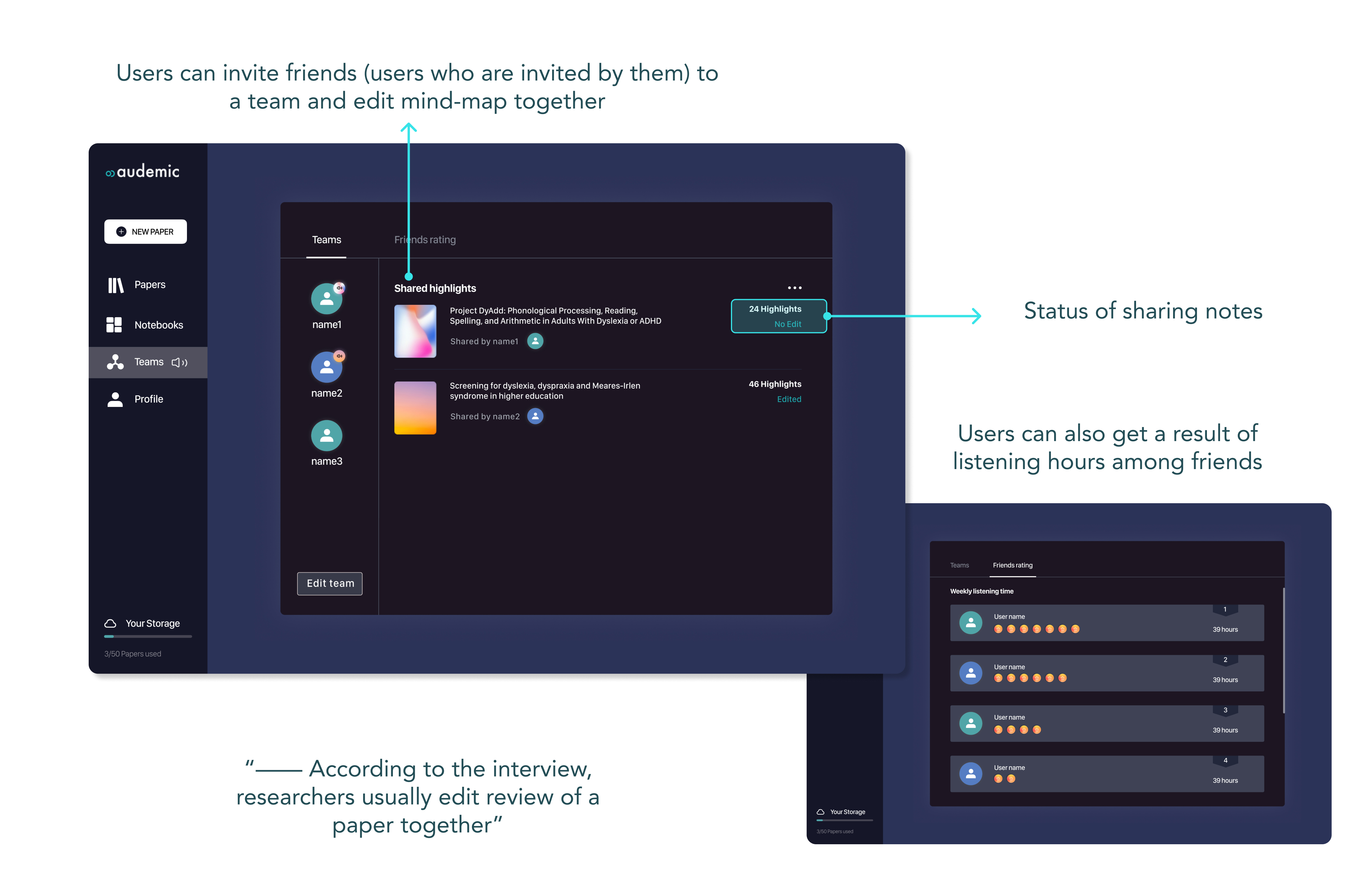
Reflections
From this project, I have the chance of learning the group of people with ADHD. I gained knowledge of their smyptoms and official treatment from research papers. However, it is the YouTube ADHD channels and online forums that told me the most effective treatment from the real individuals with ADHD. They can just be a mind map, a self-reward mechanison and a technique of breaking tasks. These interesting methods I collected from real users are much useful than reading papers. I got to know my passion in conducting user research with people and design solutions to improve their life experience.